Eat Less Meat
LIVESTOCK PRODUCTION ACCOUNTS FOR 10-15% OF ANNUAL GREENHOUSE GAS EMISSIONS AND IS ONE OF THE MAJOR CAUSES OF THE WORLD'S MOST PRESSING ENVIRONMENTAL PROBLEMS, INCLUDING GLOBAL WARMING, LAND DEGRADATION, AIR POLLUTION, AND LOSS OF BIODIVERSITY.
- Food and Agriculture Association of the United Nations
What If We Changed Our Diet
AMERICAN DIET requires 43,055 sq. ft/per person | “The Western Diet, with its high share of meat and dairy products... very large shares are wasted.”
CHINESE DIET requires 16,146 sq. ft/person | “an overwhelmingly vegetarian diet produced by high-intensity cropping”
MEDITERRANEAN DIET | “fruits, vegetables, whole grains, nuts, legumes, olive oil, and herbs and spices; fish and seafood several times a week; poultry, eggs, cheese and yogurt in moderation; and sweets and red meat only on special occasions. ”
INDIAN DIET requires 8,611 sq. ft/per person | “the 30% share of animal products were composed largely of dairy products, poultry and pork...with a moderately intensive cropping system”
Sources: Figures from Smil, V. (2000) Feeding the World: A Challenge for the Twentieth-First Century. MIT Press: Cambridge, MA. National Geographic. Livestrong. The State of Obesity. http://obesity.procon.org/
TRY MEAT AS A SIDE DISH
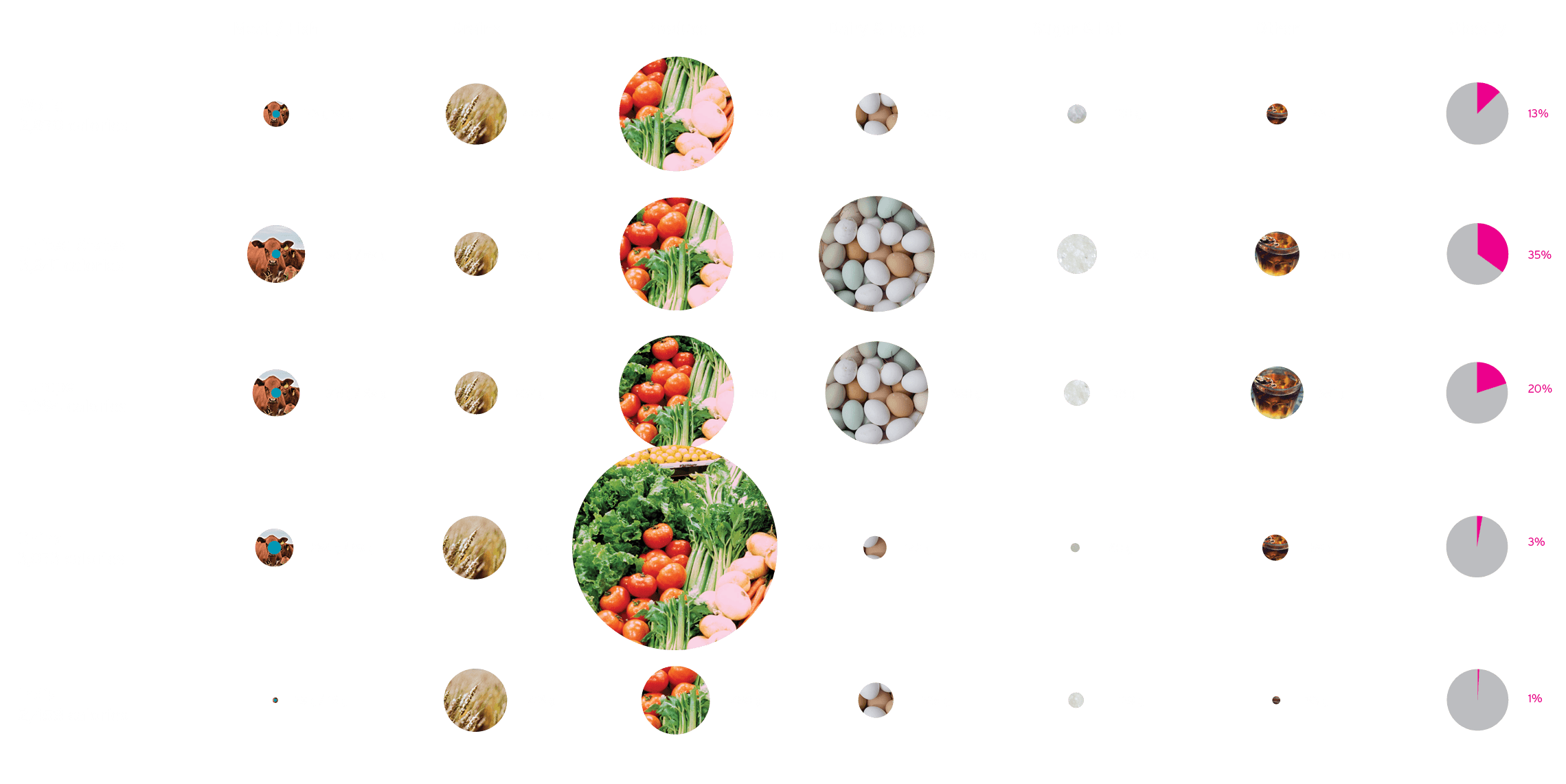
Going meatless once a week may reduce your risk of chronic preventable conditions like cancer, cardiovascular disease, diabetes and obesity.
Source: FAO. National Geographic. WHO.
SHIFTING LAND USE BY SHIFTING DIET
“...2 to 5 times more grain is required to produce the same amount of calories through livestock as through direct grain consumption.”
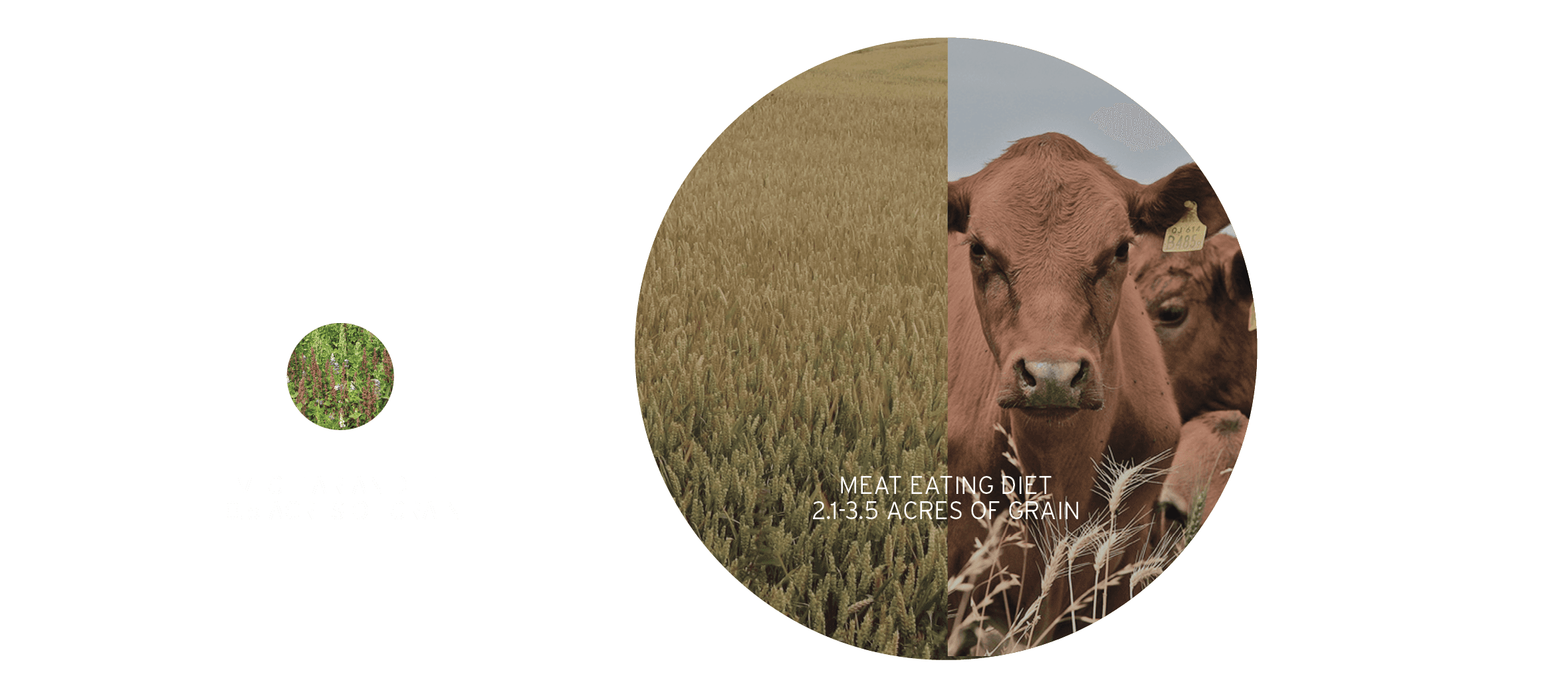
If we shifted that grain to feed humans directly, over a billion people could be fed.
Sources: http://www.nytimes.com/2008/01/27/ / http://veg.ca/content/view/133/11/#diet / Rosenfeld, Stephanie. “Beyond Beef.” Food First.
IF EVERYONE ATE 20% LESS MEAT...
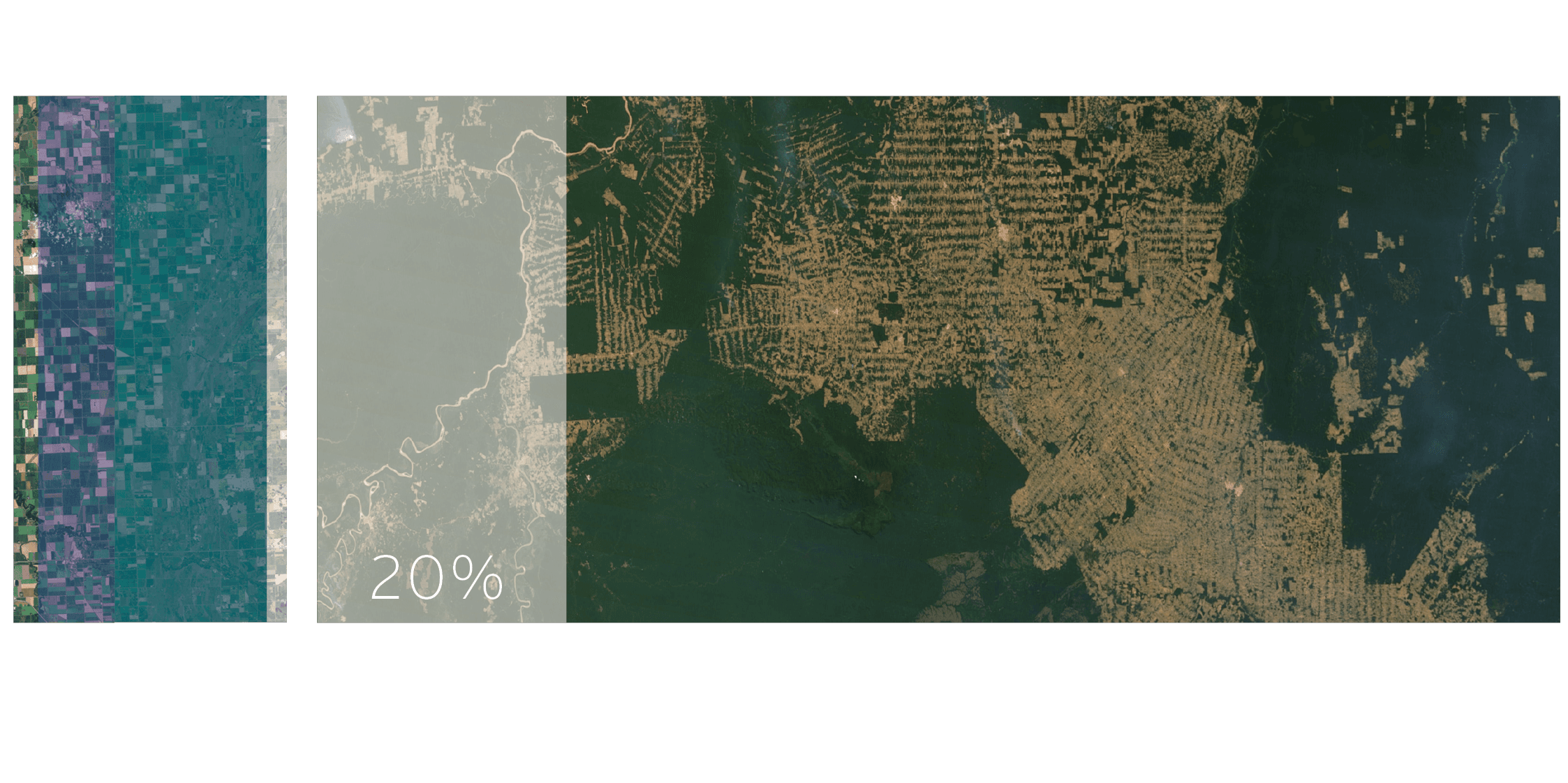
We could return 660 million hectares of crop and pasture land back to Nature. That's equivalent to all the protected land in North America and Half of South America.
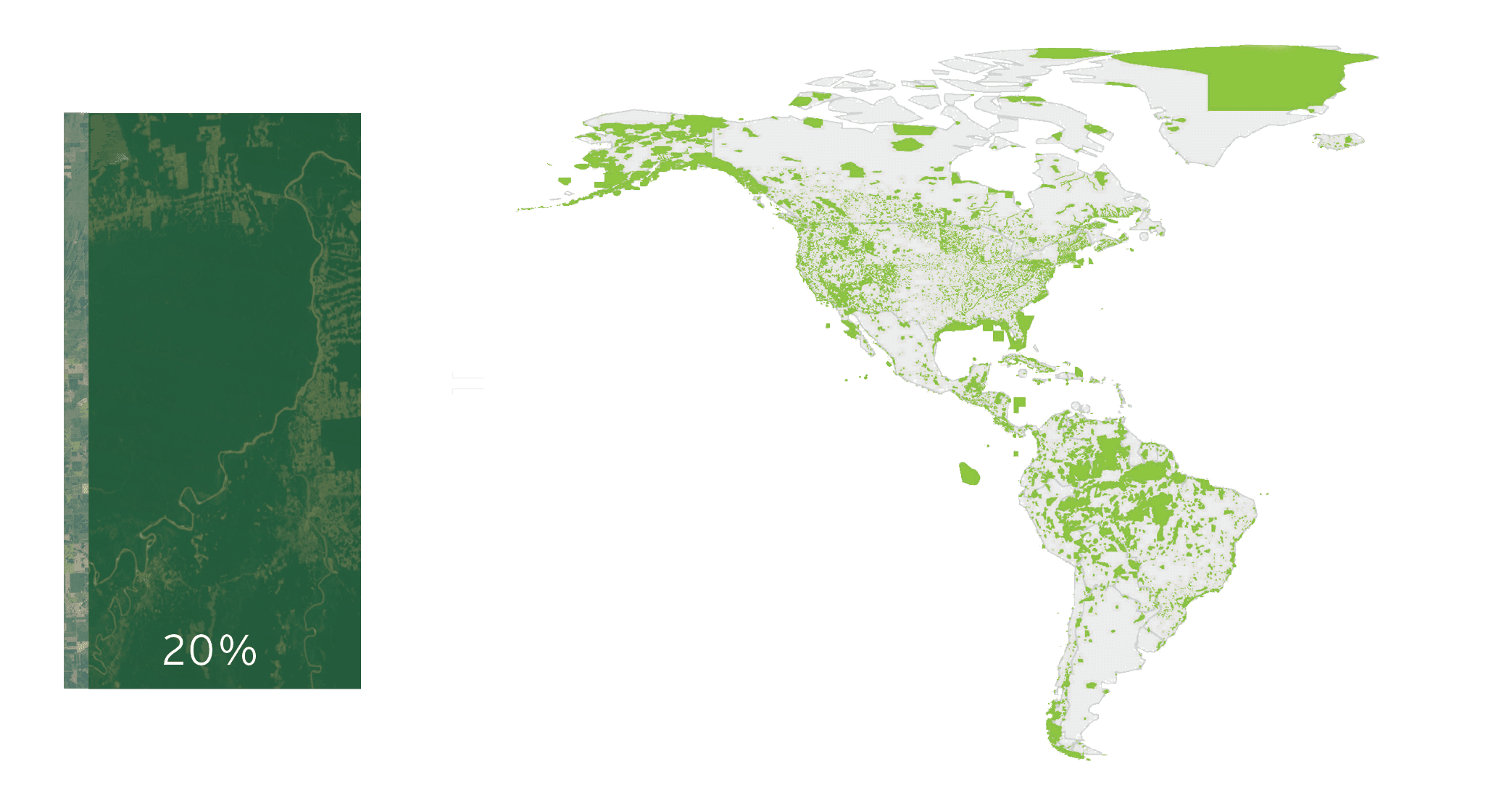
- FAO. http://sos.noaa.gov/Datasets/dataset.php?id=331
EAT LOWER DOWN THE FOOD CHAIN
TO PRODUCE 1 POUND OF MEAT IT TAKES...
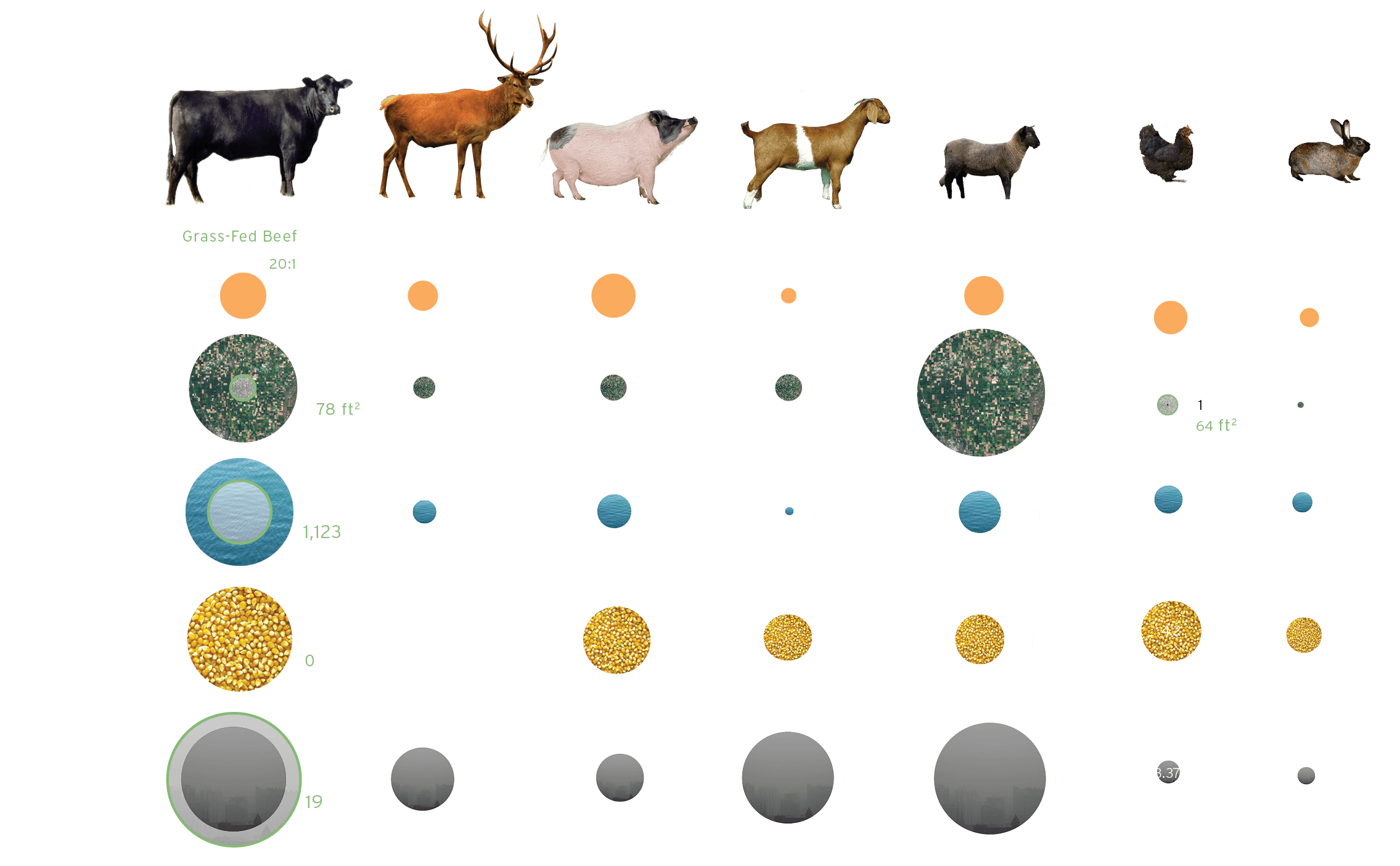
OR EAT LOWER DOWN THE FOOD CHAIN...
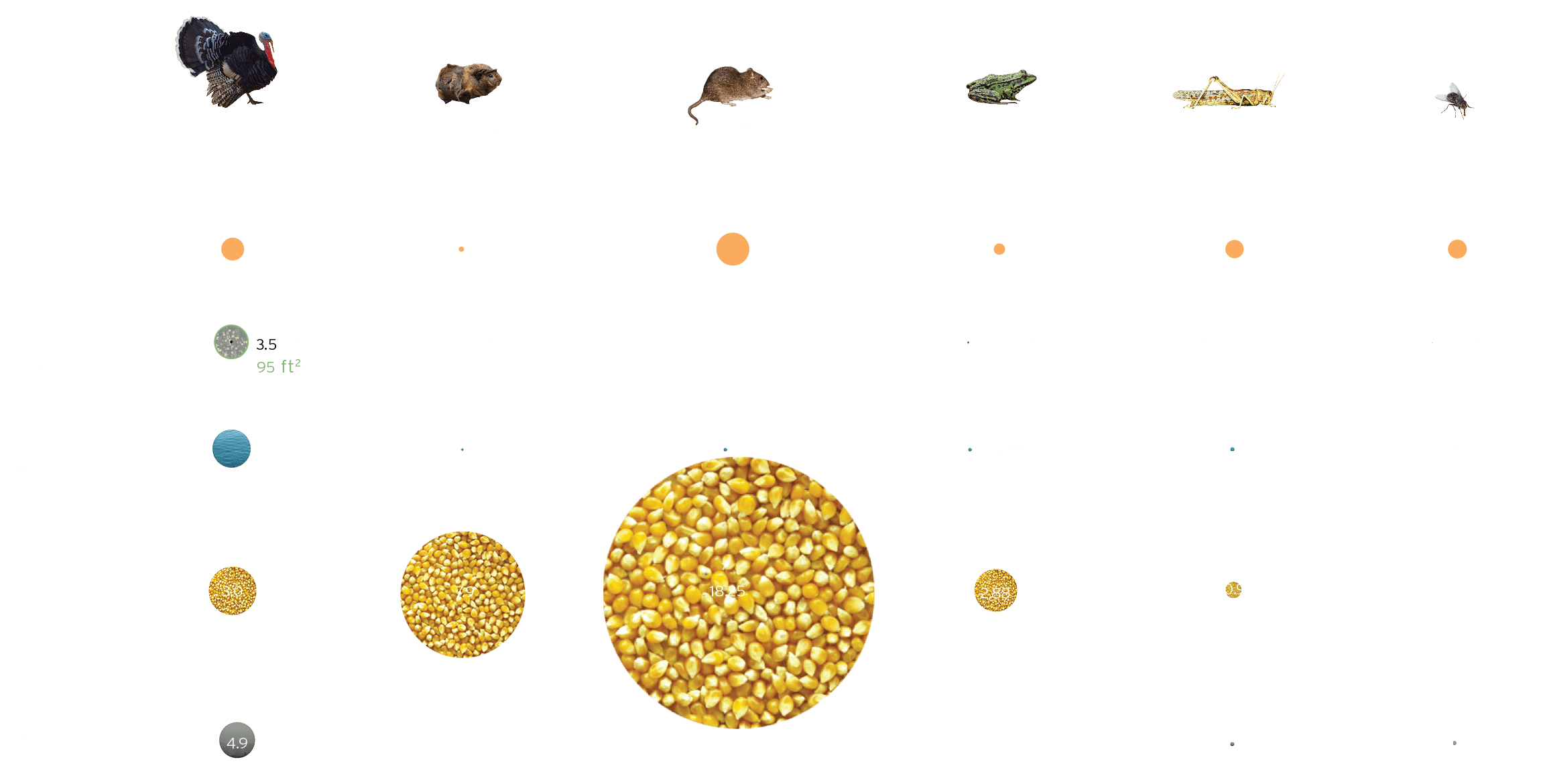
OR GO VEGETARIAN...
- FAO, USDA & see additional sources.
WHAT DO RABBITS HAVE IN COMMON WITH THE MISSISSIPPI RIVER?

If everyone around the world replaced the beef in their diet with rabbit meat, we could save almost as much water every year as the entire annual flow of the mighty Mississippi River; we could more than double global protected areas; and we could reduce and offset greenhouse gas emissions by over 30%.
We could return over 3150 million hectares of crop and pasture land back to nature.
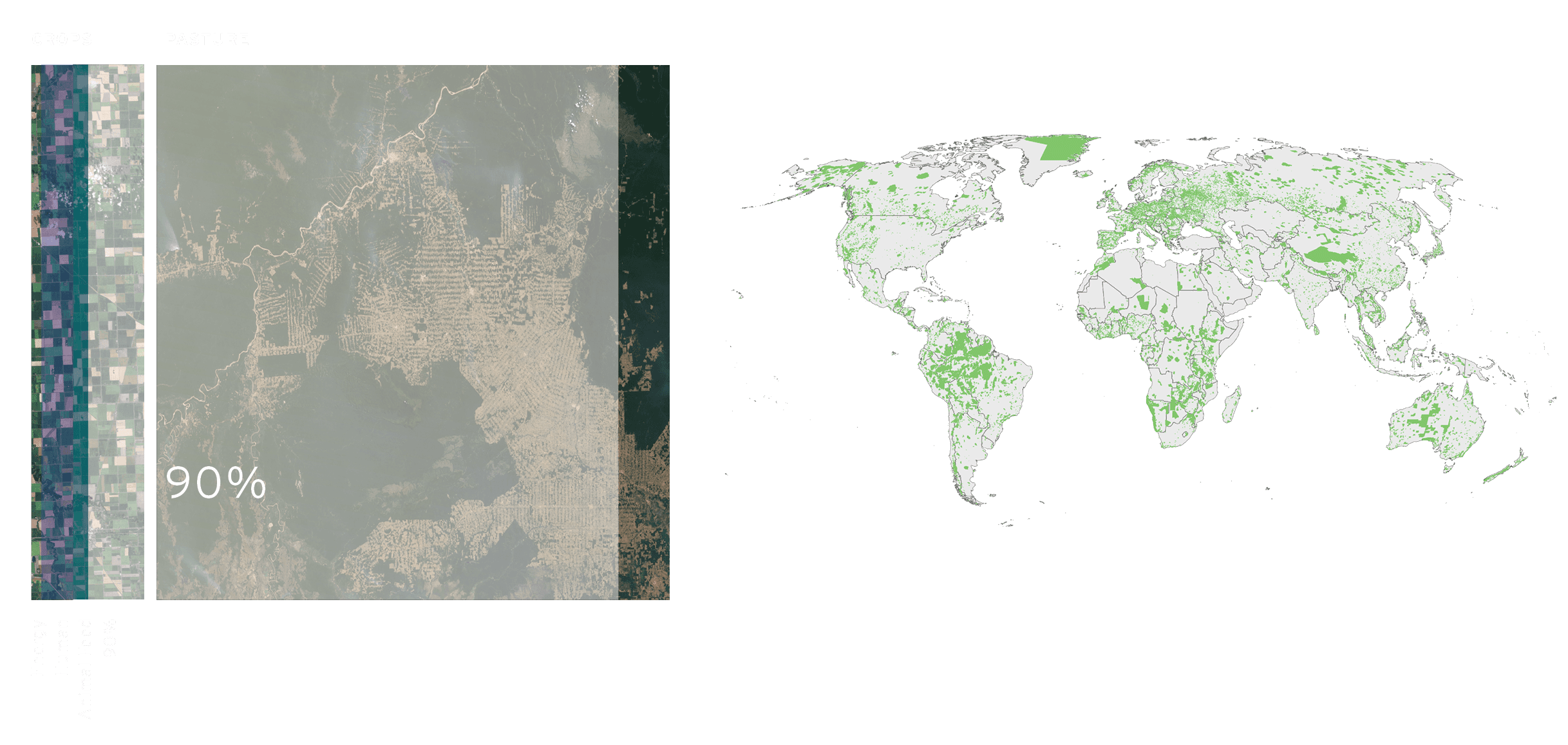
Thats 60% more land than all currently protected areas around the world.
Sources: Slow Food USA, 2010. Global Database of Protected Areas. “Livestock’s Long Shadow” FAO. “Rabbit Production” Pennsylvania State University. “Grassland Carbon Management” USFS
DID YOU KNOW?
30% OF THE WORLD GETS THEIR PROTEIN FROM EATING BUGS...
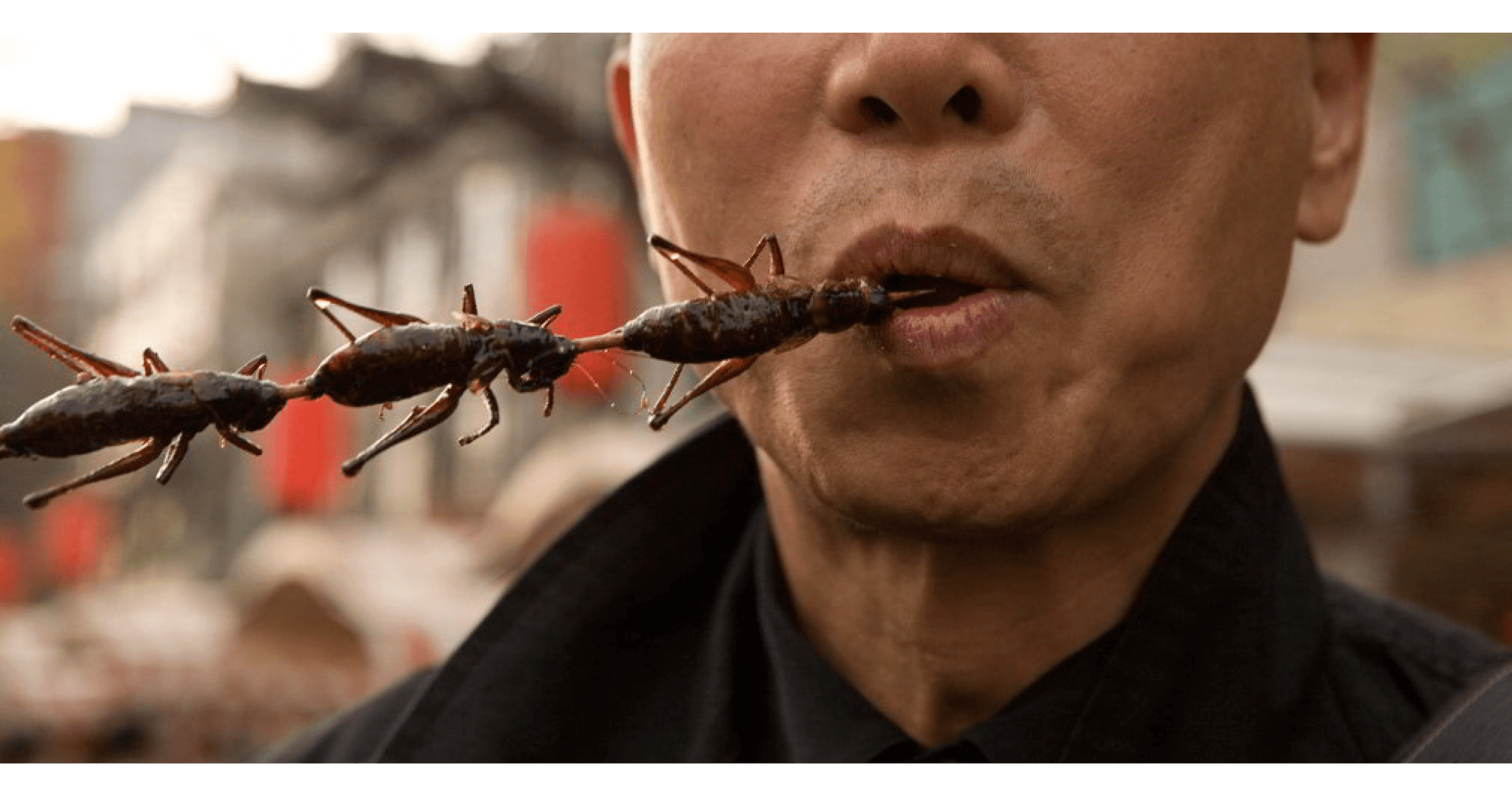
...and the average American ingests about two pounds of bugs each year unintentionally. Even if they aren’t ingredients, the Food and Drug Administration permits a certain amount of insects in food products because it’s practically impossible to keep them completely out.
Source: Food and Agriculture Organization of the United Nations
SINCE WHEN DO CHICKENS SWIM?
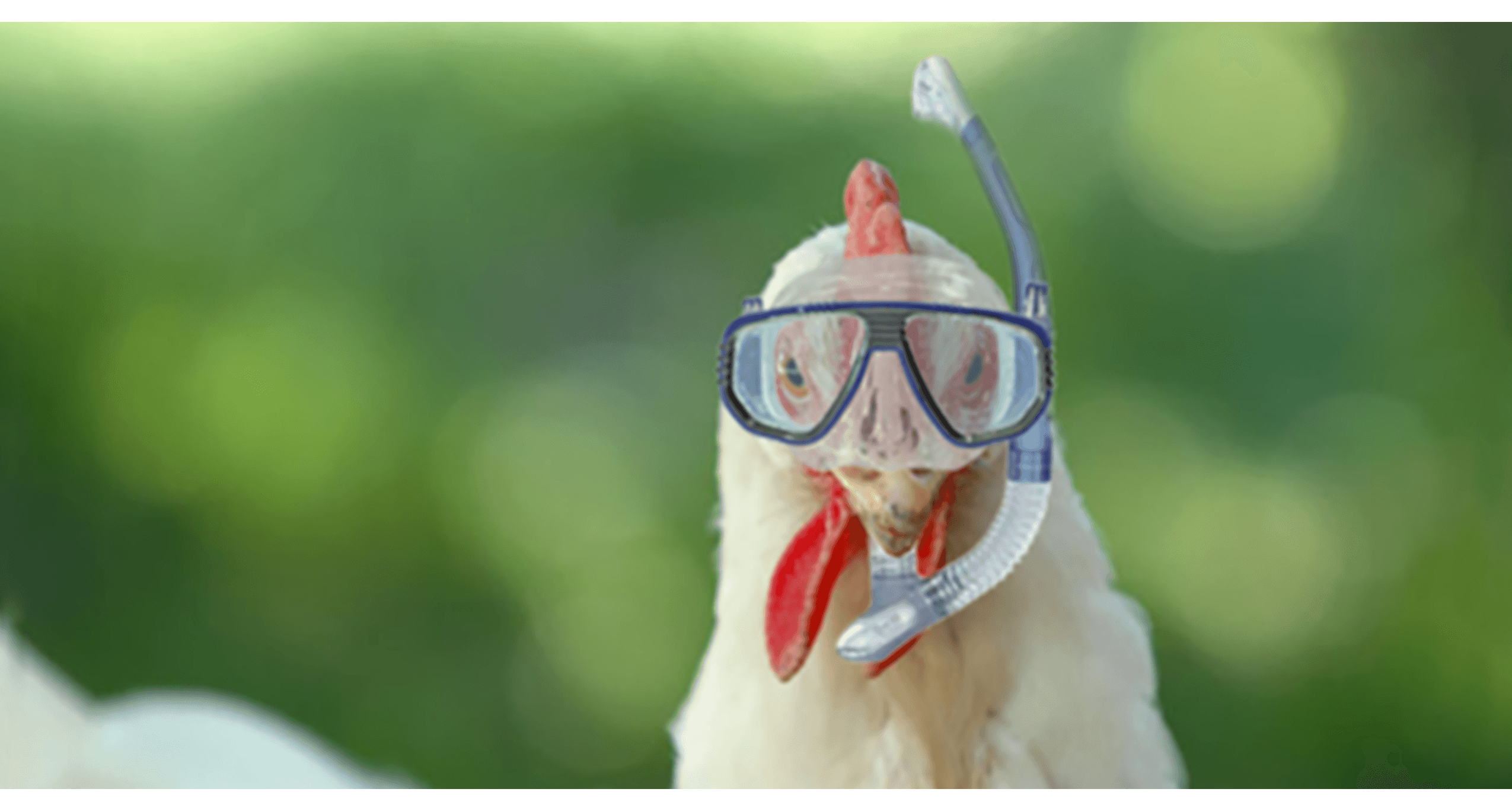
"Thirty million tons (36%) of the global annual fish catch is ground up into fishmeal and oil to feed farmed fish, chickens and pigs.”
Source: Daniel Pauly, “Conserving Wild Fish”
WHAT DO YOU THINK FREE RANGE CHICKENS EAT IN THE YARD?
AND WHY DO YOU THINK THEY CALL IT FLY FISHING?

A majority of the corn and soybeans we grow are used to feed our poultry and freshwater fish. Why don’t we consider replacing generic feedstock with insect protein, which is what chickens and many freshwater fish would normally eat?
Sources: http://www.farmedanddangerous.org/salmon-farming-problems/environmental-impacts/fish-feed/ Image Sources: Fir0002/Flagstaffotos. “Feeding Chickens.” 9 May 2005.
IF WE APPLY RESPONSIBLE FISHING PROGRAMS, WE CAN HAVE ENOUGH FISH TO FEED 1 BILLION PEOPLE A HEALTHY SEAFOOD MEAL EVERY DAY.
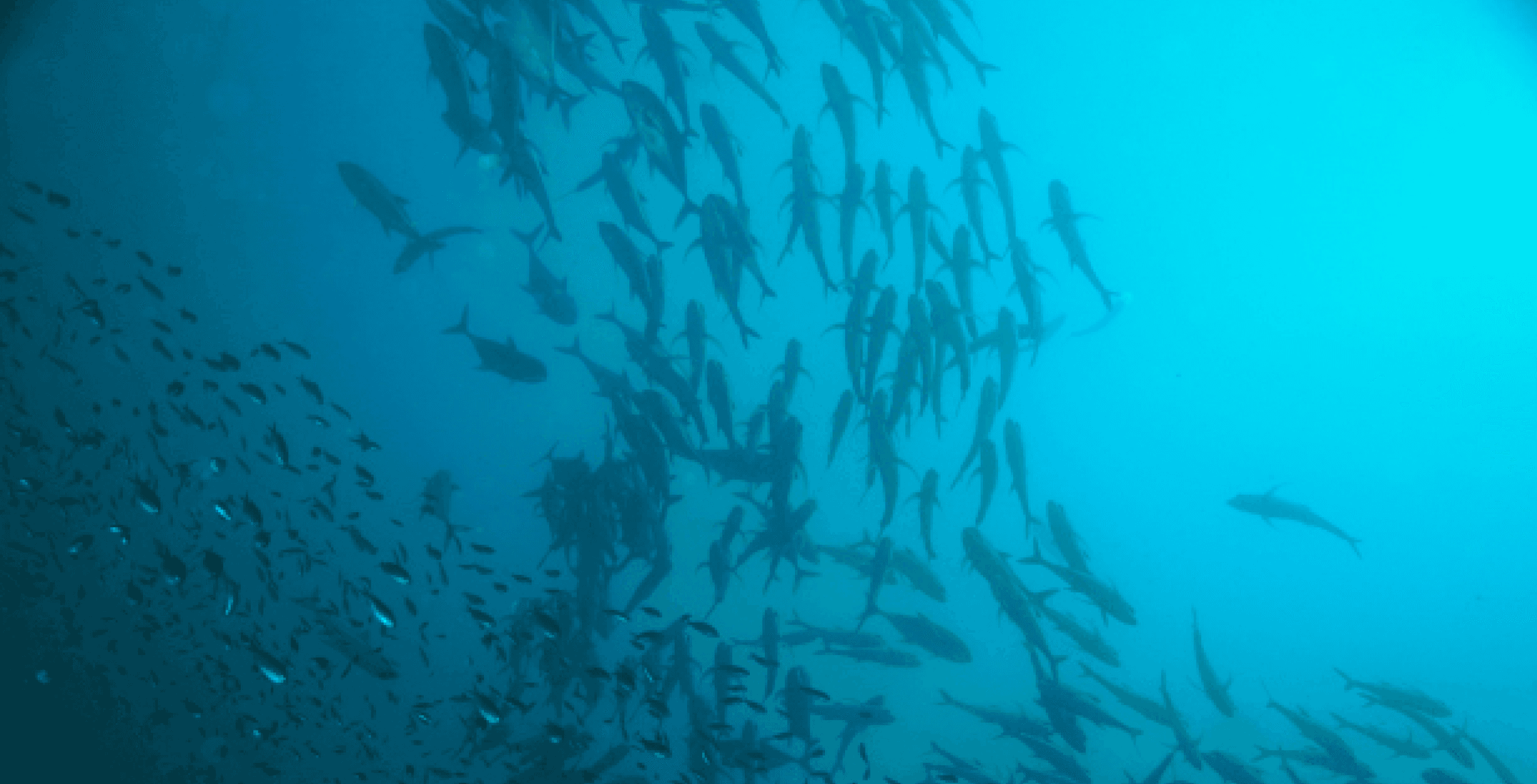
Norway leads the world in sustainable fishery management, with successful regulations on salmon, skrei, and halibut, among others.
Since 2000, 23 U.S. ocean fish populations have been rebuilt to healthy levels.
Marine protected areas have increased 250% since 2010, covering 8% of the ocean.
In the EU, the number of fish stocks within safe biological limits is now at its highest level since the early 1980s.
In New Zealand East Northland, Hauraki Gulf and Bay of Plenty snapper stocks have increased by up to 70% over the last 15-25 years.
“Within a year or two of establishing a marine reserve, population densities increased 91%, average fish size went up 31%, and species diversity rose 20%.”
Sources: Brown, Plan B 3.0, p. 163. Andrew Sharpless, Oceana. w Oceaneos. Protected Planet. Image: Punta Pargo, Panama. by LASZLO ILYES. wikimedia commons. CC2.0
Next solution



Learn about Maya Lin’s fifth and final memorial: a multi-platform science based artwork that presents an ecological history of our world - past, present, and future.

Discover ecological histories and stories of former abundance, loss, and recovery on the map of memory.

Learn how we can reduce our emissions and protect and restore species and habitats – around the world.

See how art can help us rethink the problems we face, and give us hope that each one of us can make a difference.

Help make a global memorial something personal and close to home. Share your stories of the natural world.